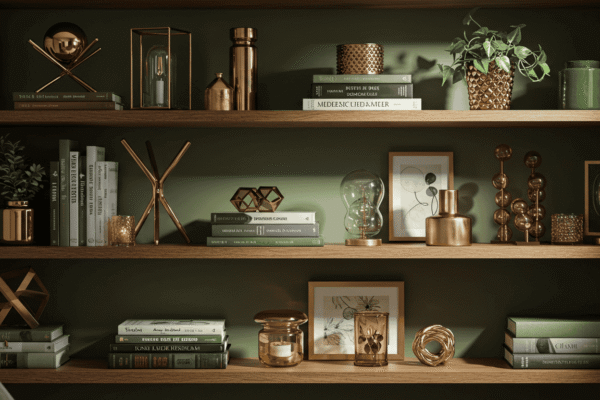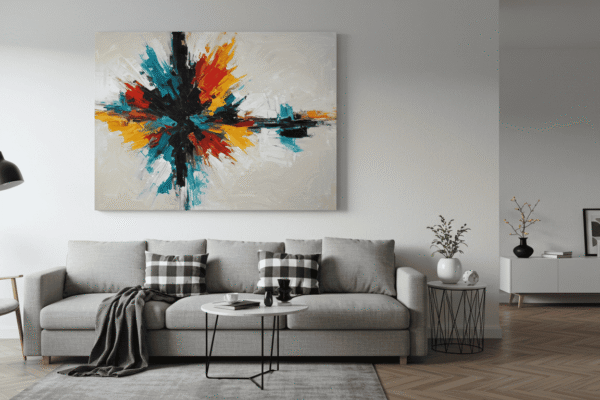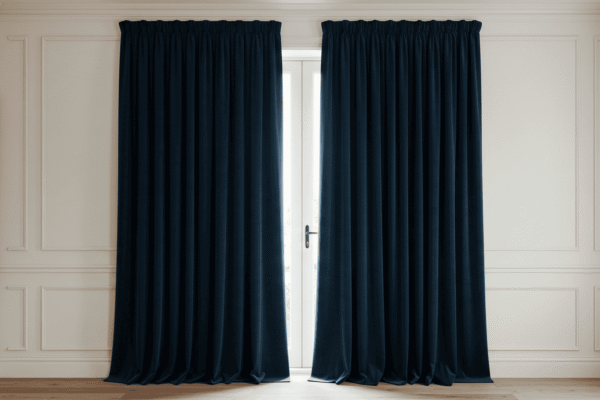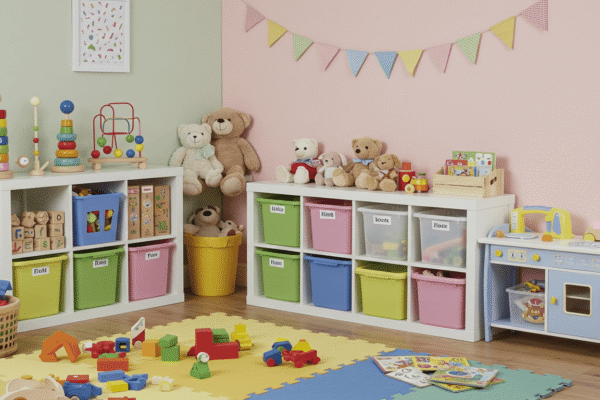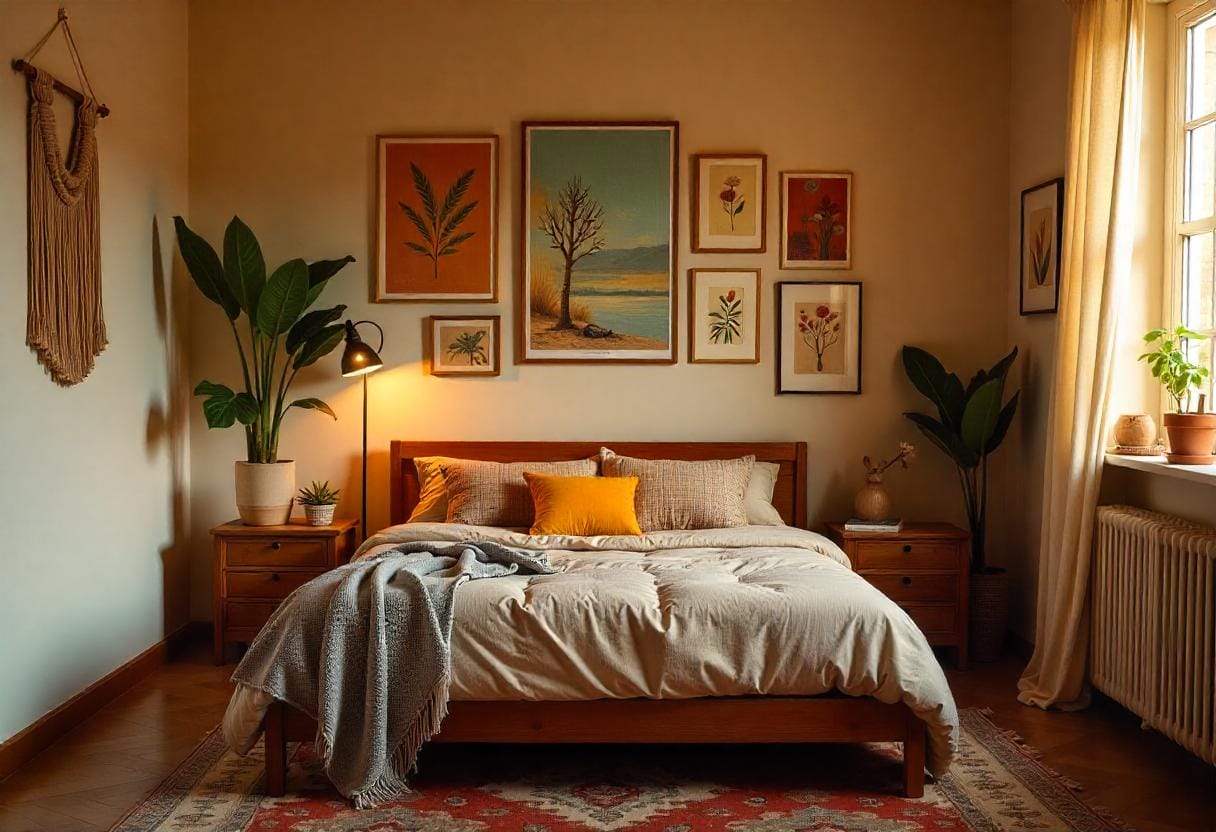Gallery Wall designs have become one of the most popular ways to transform blank walls into stunning focal points that showcase your personality and style. Whether you’re decorating a cozy living room or a narrow hallway, a well-curated gallery wall can tell a story, bring warmth, and add visual interest to any space. In this post, you’ll discover gallery wall ideas and inspiring arrangements that are easy to create and uniquely yours. Get ready to turn your walls into an artful expression with tips on layout, style, and hanging techniques!
The Rule of Three: A Minimalist’s Dream
When it comes to designing a gallery wall, simplicity often makes the strongest impact. The Rule of Three is a popular principle in art and design that suggests using groups of three elements to create visual balance and harmony. This approach is perfect for those who appreciate minimalist aesthetics but still want their walls to have personality and charm. Applying this rule to your gallery wall ideas can help you avoid overcrowding while maintaining an engaging display.
What Is the Rule of Three in Wall Design?
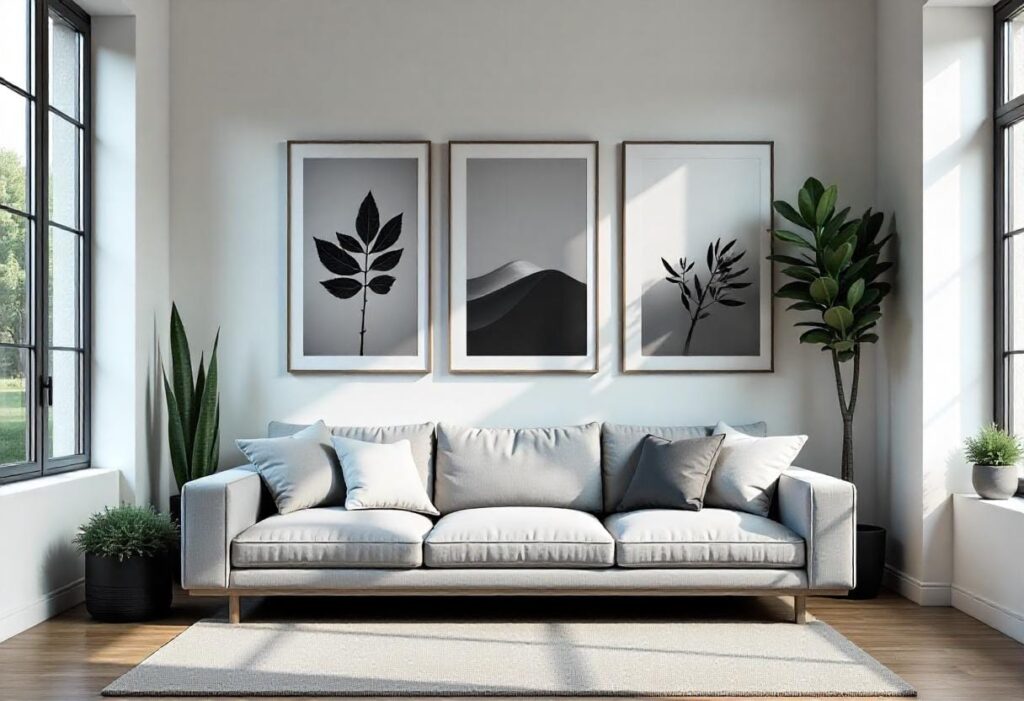
The Rule of Three in wall design refers to arranging three pieces of artwork, photos, or objects in a way that feels balanced and complete. Odd numbers like three are naturally more dynamic and visually appealing than even-numbered groups because they provide a focal point without symmetry that feels too rigid. This concept taps into how the human eye tends to seek patterns, and three items form a simple but effective grouping that guides the viewer’s attention naturally.
Best Layouts for Clean, Balanced Looks
Using the Rule of Three on your gallery wall means choosing layouts that are orderly yet not overly symmetrical. This creates a sense of balance without appearing stiff or overly planned. Some of the best layouts include triangular formations or a straight horizontal or vertical line, where spacing between pieces is consistent but flexible enough to add personality.
Vertical Stack vs Horizontal Spread
When deciding between a vertical stack and a horizontal spread for your three-piece gallery wall, consider the space available and the overall effect you want to achieve. A vertical stack works well in narrow spaces such as hallways or beside furniture, drawing the eye upward and creating height. On the other hand, a horizontal spread suits wider walls, providing a sense of expansiveness and flow.
| Layout Type | Best For | Visual Effect | Space Usage |
|---|---|---|---|
| Vertical Stack | Narrow walls, hallways | Adds height, draws eye upward | Efficient use of vertical space |
| Horizontal Spread | Wide walls, above furniture | Expands visual width, feels open | Utilizes horizontal space fully |
| Triangular Group | Accent walls, focal points | Balanced yet dynamic | Centered focus with visual flow |
This comparison helps you choose the right arrangement to fit your wall and style while maintaining the clean, balanced look that the Rule of Three promotes.
Eclectic Energy: Mixing Art Styles & Mediums
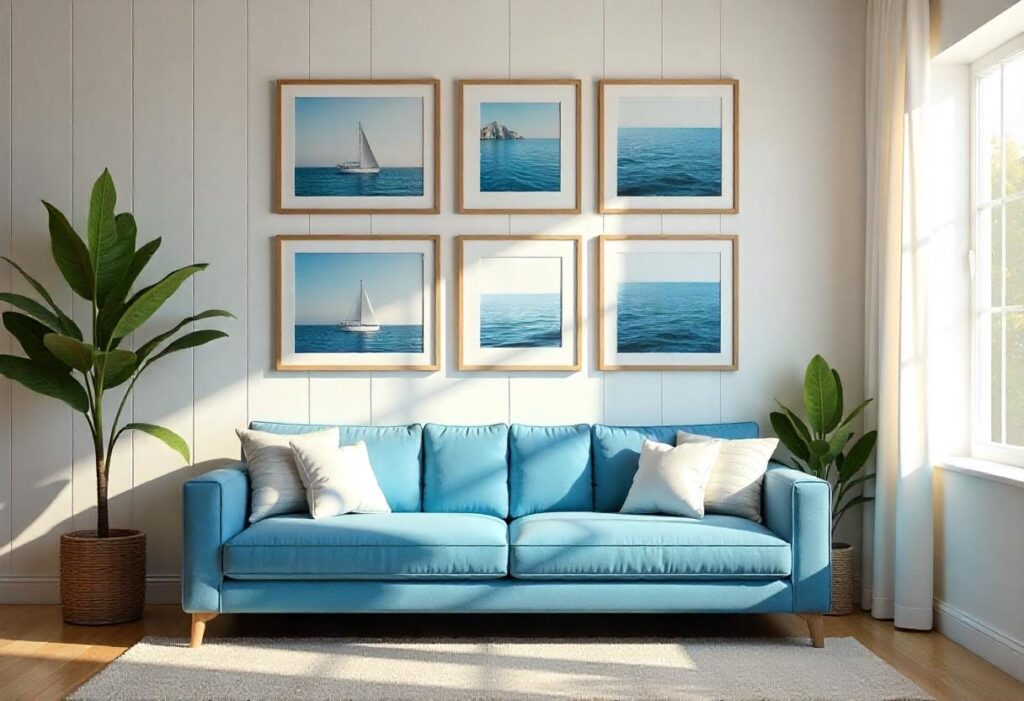
Creating a gallery wall that combines various art styles and mediums can bring a vibrant, personalized touch to your home. The key is to curate your pieces thoughtfully so that the wall feels cohesive rather than chaotic. By blending different textures, colors, and formats, you can design a space that reflects your unique taste and sparks visual interest.
How to Curate Diverse Art Without Chaos
When mixing different styles on a gallery wall, balance is essential. Start by choosing a unifying element, such as a consistent color palette, similar frame styles, or a shared theme. This helps tie diverse pieces together. Avoid overcrowding by leaving enough space between items and varying the scale of the artwork to create rhythm and flow. Remember, contrast can be a strength if managed with intentionality.
Incorporating Personal Photos, Textiles & Sketches
To make your gallery wall truly one-of-a-kind, consider including personal photos, textile art, or even hand-drawn sketches alongside traditional prints or paintings. Textiles add texture and depth, while sketches provide a raw, intimate feel. Arrange these mixed media thoughtfully by grouping similar textures or framing styles, so the display feels curated rather than random.
Gallery Wall Mood Board: Layout Suggestions for Mixed Media
An interactive gallery wall mood board can help you visualize how different art pieces will look together before committing to hanging them. Start by collecting images of your chosen artworks and arranging them on a digital or physical board. Experiment with layering textiles, photos, and sketches alongside framed prints to find a layout that balances variety with harmony. This mood board approach allows you to test combinations and refine the arrangement until it feels just right.
The Grid Layout: Clean Lines, Big Impact
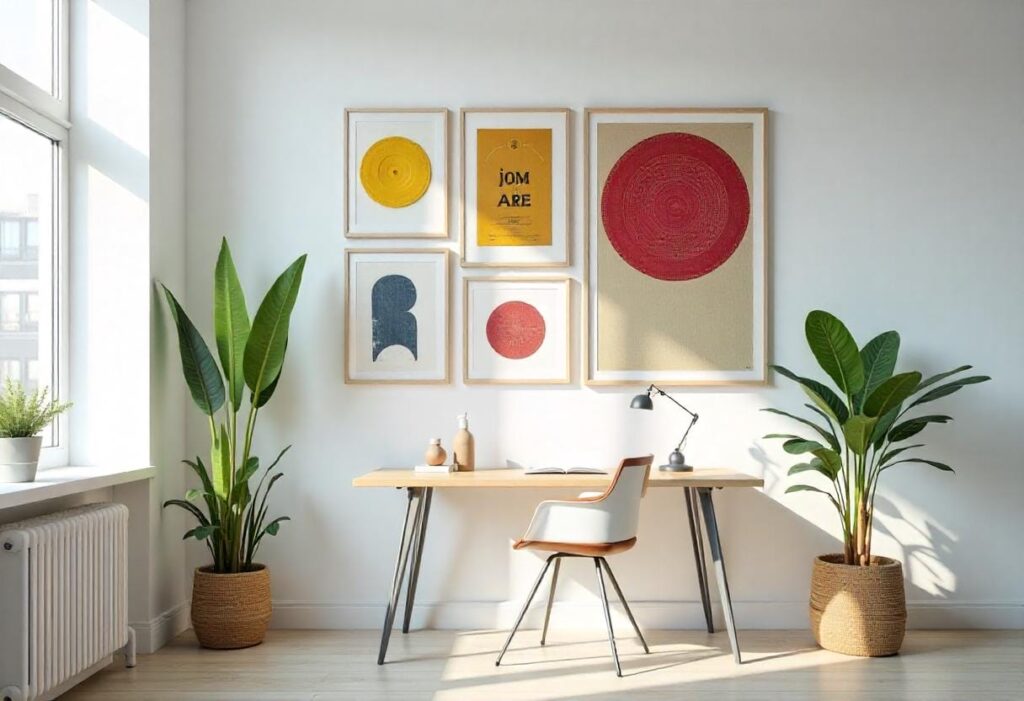
The grid layout is a classic choice for a gallery wall that emphasizes order and symmetry. Its structured arrangement creates a sense of calm and sophistication, making it ideal for spaces where a clean, polished look is desired. With equal spacing and alignment, grid layouts turn a collection of individual pieces into a cohesive visual statement.
Why Symmetry Works in Certain Spaces
Symmetry naturally appeals to the eye and provides a sense of balance and stability. In areas like living rooms, offices, or formal dining rooms, a symmetrical gallery wall can enhance the room’s elegance without overwhelming the space. It also makes the wall art feel intentional and curated, which is especially effective in minimalist or modern interiors.
Ideal Grid Wall Placement (Dining Rooms, Hallways)
Grid layouts are especially well-suited to spaces where walls are long and narrow, such as hallways, or where a central focus is needed, like above dining tables. In these areas, the regularity of the grid can complement the room’s architecture and furniture arrangement, helping to define the space and draw attention to the wall without competing with other design elements.
| Grid Type | Best For | Visual Effect | Space Requirements |
|---|---|---|---|
| 4×4 Grid | Large walls, open spaces | Strong, bold statement | Requires significant wall space |
| 3×3 Grid | Medium-sized walls | Balanced and neat | Fits most average walls |
| Linear Grid | Narrow walls, hallways | Elongates and directs eye movement | Perfect for tight or long spaces |
This table highlights the advantages of different grid sizes, helping you select the best layout for your wall’s size and the desired visual impact.
Storytelling Walls: A Journey in Frames
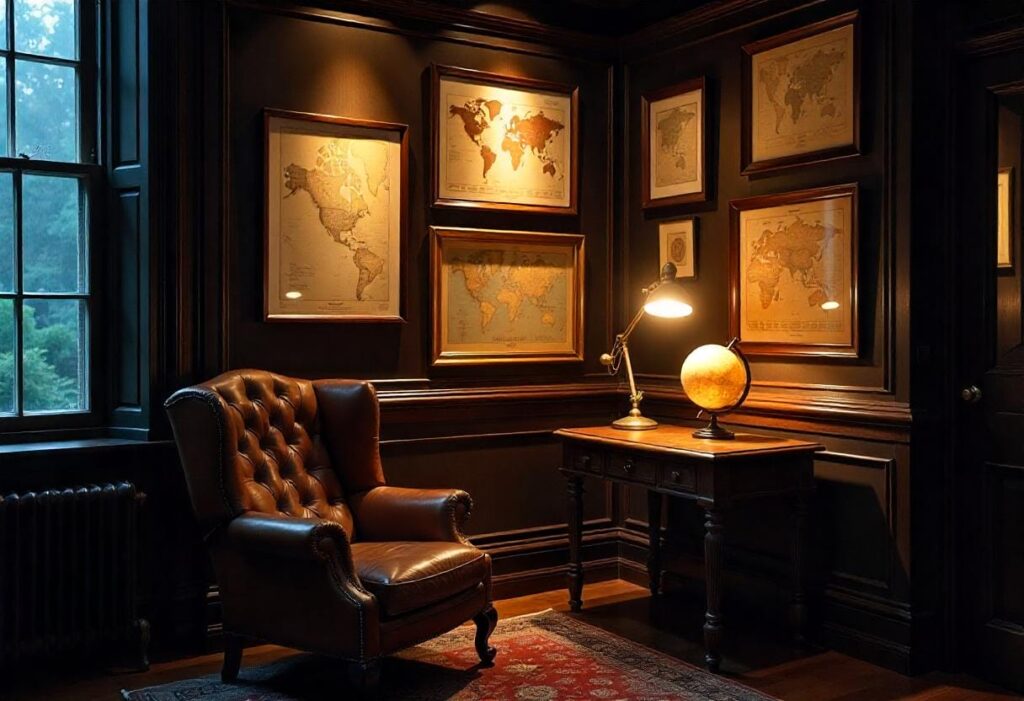
A gallery wall is more than just decoration—it can be a powerful way to tell your personal story. By thoughtfully arranging photos and artwork that capture meaningful moments, you create a visual narrative that invites viewers to explore your memories and experiences. Storytelling walls turn empty spaces into heartfelt galleries filled with significance.
Creating a Timeline with Photos
One of the most effective storytelling methods is to organize your gallery wall as a timeline. This approach allows you to display photos chronologically, showcasing growth, change, and milestones. Whether it’s documenting a child’s early years, travels, or special family occasions, a timeline layout guides viewers through your story in an intuitive and engaging way.
How to Group by Themes (Travel, Family, Milestones)
If a strict timeline feels too linear, grouping your art and photos by themes can be equally compelling. Create sections within your gallery wall dedicated to travel adventures, family gatherings, or significant life events. Grouping by theme helps add context and focus, making it easier for viewers to connect with each collection on a deeper level.
Using Matting to Add Space and Intent
Matting—the border around photos or artwork inside a frame—is a subtle but powerful tool in storytelling walls. It creates breathing room between pieces, preventing the wall from feeling cluttered. Matting also directs attention, emphasizing certain images or groups, and adds a layer of intentionality to your display. By varying mat sizes and colors thoughtfully, you can highlight important moments and create visual hierarchy within your story.
The Organic Flow: No Rules, Just Vibe
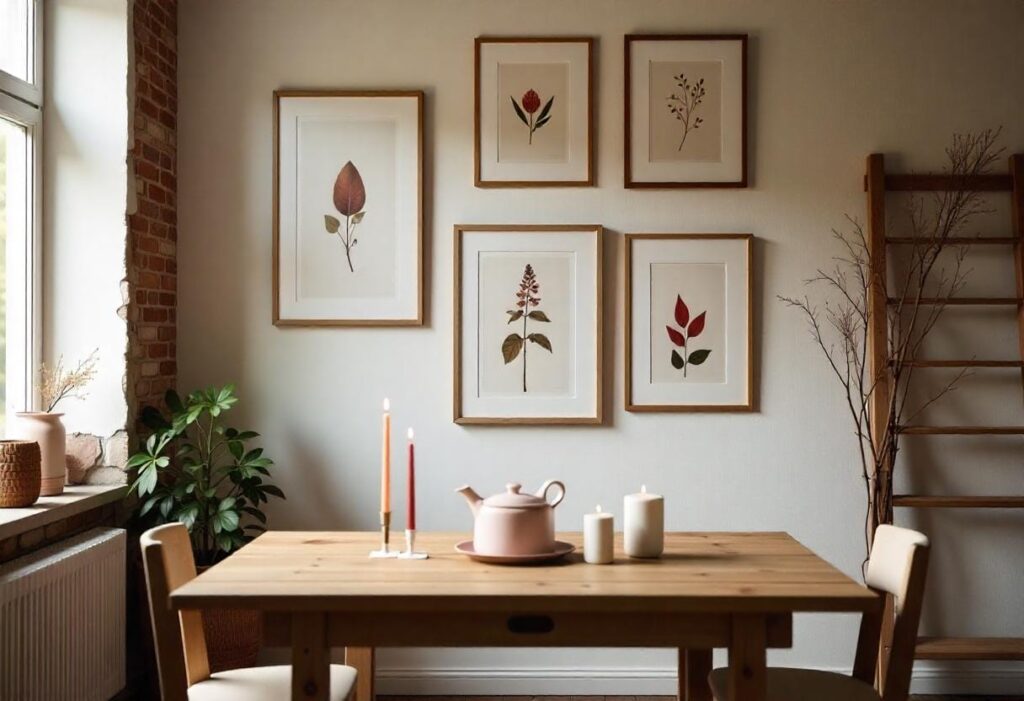
Not every gallery wall needs to follow strict rules or grids. The organic flow style embraces creativity and spontaneity, allowing your wall to develop naturally based on your personal taste and available space. This approach encourages mixing sizes, shapes, and frames freely, resulting in a unique, lively display that feels effortlessly curated.
How to Plan a “Free-Form” Gallery Wall
Planning a free-form gallery wall starts with selecting a variety of pieces you love—artwork, photos, prints, and objects of different sizes and styles. Instead of rigid measurements, lay out your collection on the floor first. Move pieces around until the arrangement feels balanced but unforced. This process helps you visualize the overall composition and experiment with spacing and layering before committing to the wall.
Visual Balance Without a Ruler
Achieving visual balance in a free-form layout is about intuition rather than precision. Pay attention to how the eye moves across the wall, aiming for an even distribution of color, size, and frame weight. Group larger pieces with smaller ones and vary the spacing slightly to avoid monotony. The goal is harmony through contrast and rhythm, creating a wall that feels lively and inviting.
Small Spaces, Bold Walls: Maximize Every Inch
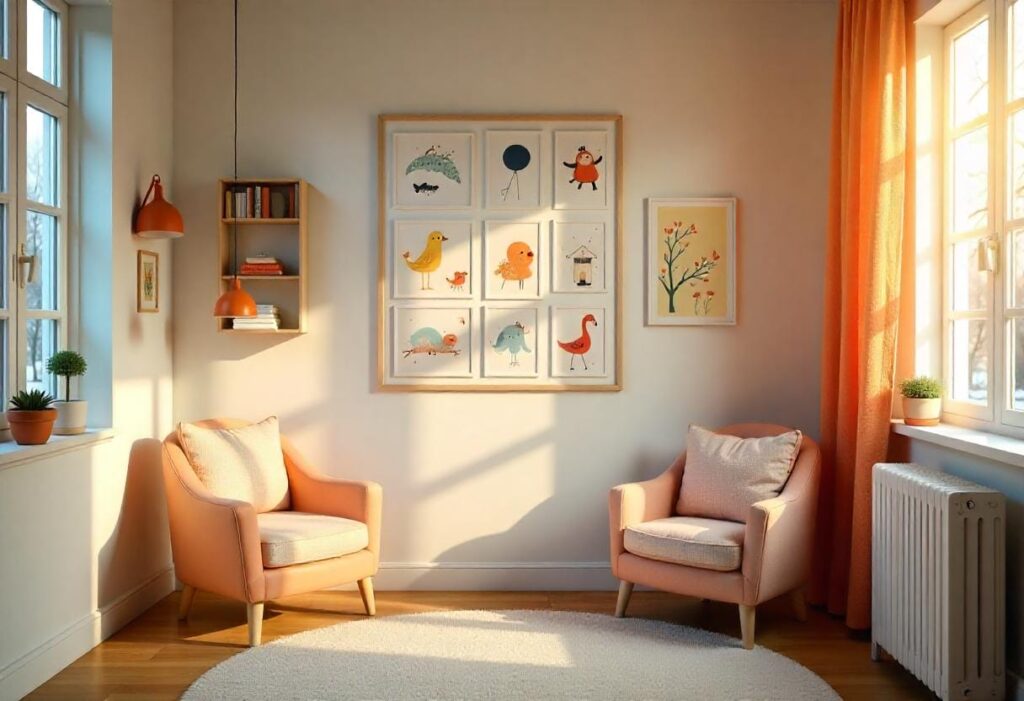
Creating a striking gallery wall in small spaces like apartments or studios requires thoughtful planning to make the most of limited wall area. With the right layout and frame choices, even the coziest rooms can boast bold, personalized displays that enhance the space without overwhelming it. The goal is to maximize every inch while maintaining a sense of openness.
Best Gallery Wall Layouts for Apartments or Studios
In smaller spaces, simplicity and scale are key. Compact gallery walls with fewer, carefully selected pieces work best. Consider tight groupings or vertical arrangements that fit narrow walls or corners. Mixing small and medium-sized frames can create visual interest without clutter. Avoid overly large pieces that can overpower the room.
Going Vertical to Draw the Eye Up
Using vertical space effectively helps make small rooms feel taller and more open. A vertical gallery wall arrangement draws the eye upward, elongating the room’s appearance. This technique works well on narrow wall strips, beside doorways, or along staircases, helping you add personality without sacrificing precious floor space.
| Wall Size | Recommended Frame Sizes | Layout Suggestions |
|---|---|---|
| Under 4 feet wide | Small frames (8×10 inches or less) | Vertical stacks, tight clusters |
| 4 to 6 feet wide | Small to medium frames (8×12 to 12×16 inches) | Mixed vertical and horizontal groupings |
| Over 6 feet wide | Medium frames (12×16 inches and up) | Grids or larger horizontal spreads |
This table helps you choose frame sizes that complement your wall space, ensuring your gallery wall feels balanced and well-proportioned, even in compact living environments.
Seasonal Swaps: Gallery Walls That Evolve
A gallery wall doesn’t have to be static. By updating the artwork periodically, you can keep your space feeling fresh and reflective of the season or your current mood. Seasonal swaps allow you to celebrate holidays, changes in nature, or personal milestones without redesigning your entire wall each time.
Rotating Art by Season or Mood
Rotating pieces on your gallery wall is a simple way to bring new energy to your space. For example, swap bright, floral prints in spring and summer for warmer tones and cozy imagery in fall and winter. You can also adjust your art based on your mood or special occasions, making your wall a living, dynamic part of your home.
Creating a Modular Frame System
To make seasonal swaps easier, consider investing in a modular frame system. This involves using frames and hanging methods that allow quick and damage-free changes, such as magnetic frames, ledges, or clips. Modular setups save time and effort, encouraging you to experiment with different arrangements and themes without hassle.
Hanging Tips & Layout Tricks for Every Wall Type
A successful gallery wall is as much about the hanging process as it is about the artwork itself. Whether you’re dealing with drywall, plaster, brick, or rental walls, knowing how to arrange and hang your frames efficiently can save time, effort, and damage to your space. This section offers practical tips and creative tricks for all wall types.
How to Arrange Frames Without Measuring
You don’t always need a tape measure or level to achieve a balanced gallery wall. Start by laying your frames out on the floor, experimenting with different arrangements until you find one that feels right. Using consistent spacing between pieces and aligning key focal points can help create harmony without precise measurements. Trust your eye and adjust as needed once the frames are on the wall.
Tips for Hanging Without Nails or Drilling
If you want to avoid nails or drilling—especially in rental homes—there are several effective alternatives. Adhesive strips, hooks, and tension rods allow you to hang frames securely while protecting your walls. These solutions work best with lightweight frames and can often be removed cleanly without leaving marks.
Pre-Planning Tools: Floor Mockups, Paper Cutouts
Before hanging anything, create a mockup of your layout on the floor or use paper cutouts taped to the wall. This hands-on step lets you visualize the final arrangement and make adjustments without commitment. It also helps you plan spacing and alignment, reducing the risk of mistakes during installation.
| Hanging Method | Best For | Wall Types | Pros | Cons |
|---|---|---|---|---|
| Adhesive Strips | Lightweight frames | Drywall, painted surfaces | No holes, easy removal | Weight limits, less durable |
| Hooks | Medium-weight frames | Most wall types | Strong hold, reusable | Small holes required |
| Ledges | Versatile display setups | Any wall | Easy to swap art, no holes in many cases | Requires shelf space |
This comparison helps you pick the best hanging method based on your frame weight, wall type, and flexibility needs—making your gallery wall project smoother and more enjoyable.
Bonus Inspiration Gallery
To spark your creativity and help you visualize different ways to style your gallery wall, here’s a collection of inspiring layout ideas. Each layout offers a unique vibe and can be adapted to suit your space and personal taste.
Diagonal Drift
A dynamic arrangement where frames follow a diagonal line across the wall, creating movement and energy that draws the eye naturally from one piece to the next.
Frame Cluster
A cozy, organic grouping of various frame sizes clustered tightly together, perfect for creating an intimate focal point in smaller rooms or corners.
The Staircase Flow
Designed specifically for walls along staircases, this layout follows the upward angle, maintaining consistent spacing and alignment to complement the stairs’ rhythm.
Symmetrical Harmony
A balanced and orderly grid or mirrored design that adds elegance and calm to any space, ideal for formal living areas or offices.
Mixed Media Mashup
Incorporates not just framed art but also shelves, textiles, and sculptural elements for a layered, textured look that feels vibrant and personal.
These inspiration blocks can help you decide on a direction or mix and match elements to create a gallery wall that truly reflects your style.
Bringing Your Perfect Gallery Wall to Life
Designing a gallery wall is a wonderful way to showcase your personality, memories, and artistic taste while transforming any space into a visual story. Whether you prefer minimalist arrangements like the Rule of Three, eclectic mixes, or structured grids, the key is to create a display that feels authentic and enjoyable to you. With thoughtful planning, creative layouts, and the right hanging techniques, your gallery wall will not only enhance your home’s style but also become a source of inspiration and joy for years to come. Start experimenting today and watch your walls come alive!


